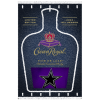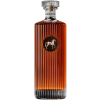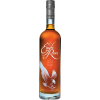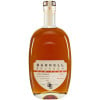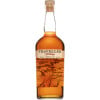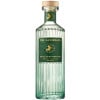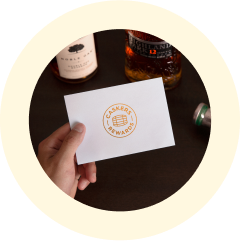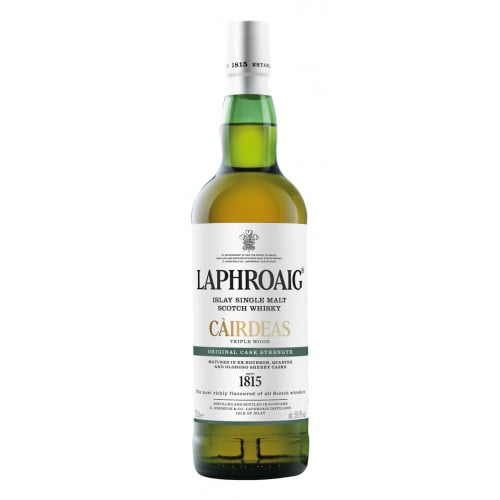About Laphroaig Càirdeas Triple Wood Cask Strength
It was through a fortuitous sequence of events that Laphroaig came into existence. In 1815, Donald and Alexander Johnston leased 1,000 acres of land on the island of Islay. Their intent was to raise and sell cattle on the land and as a result, they began growing barley to be used as feed for their livestock. Following a particularly bountiful harvest, the brothers distilled the excess grains they had grown into whisky, and sold it to the inhabitants of the island. Soon thereafter, the brothers found it more profitable to distill whisky than to raise cattle, and Laphroaig (pronounced La-froyg) Distillery was born.
The distillery remained in the family for over a century of its bloodline, until 1954, when, upon his death, a childless Ian Hunter bequeathed the distillery to Bessie Williamson, a secretary that had been working at the distillery for two decades. Hunter, who was quite obsessive over the family distillery, slowly revealed its secrets to Williamson after she had earned his trust. It has been said that Hunter was so protective of the distillery that he prevented a cooper who was employed at the distillery, from publishing his memoirs, because they described the workings of the distillery in too great detail.
Laphroaig Single Malt Whisky is one of the most flavorful and intense whiskies made anywhere in the world. During Prohibition, it was one of the few whiskies still legally imported into the United States, as it was considered a medicinal spirit. Laphroaig Single Malt is made from the finest Scottish barley, which is malted at the distillery and dried over a peat flame. Unlike other distilleries which source peat from the Scottish mainland, the peat used to smoke Laphroaig barley is made from the heather, mosses and lichens of Islay and adds a distinct iodine-like flavor to the whisky.
After the barley has been malted and peated, it is fermented before being twice-distilled through Laphroaig's copper-pot stills. The unique stills have an usually flat base and flat surfaces, which lends to the overall intensity of the whisky. After the whisky has been distilled, it is aged in seasoned oak barrels, which are re-charred prior to being filled. The re-charring process caramelizes the remaining sugars in the barrel, and adds slightly sweet notes of vanilla and nutty dough to the whisky.
Introducing the 2019 annual release of the Càirdeas series, Càirdeas Triple Wood Cask Strength. This exclusive bottling celebrates the Friends of Laphroaig and marks the annual Feis Ile festival on Islay. The unique expression is a special triple maturation, first matured in ex-bourbon barrels, then in quarter casks and finally in European oak casks which previously held Oloroso sherry. It is then barrier filtered and bottled at cask strength to create a punchy dram with Laphroaig’s signature richness of flavor and smoky taste.
Pick up your bottle today!
About Scotch
Scotch is the most popular whisky in the world and is considered the king of them all! There are five whisky regions in Scotland (six if you count the not officially recognized Islands), and each of them produces spirits with unique properties and distinct tasting notes. (The type of grain used determents the type of the scotch.)
Malt whisky is made of malted barley, and grain whisky uses other grains like corn or wheat. Most of the time, a whisky is blended from different distilleries hence the name blended scotch, but if a malt whisky is produced in a single distillery, we get something extraordinary called a single malt.
Check out our impressive selection of scotch whiskies, find your new favorite in the Top 10 scotch whiskies, or explore our treasury of rare & hard to find scotch whiskies.
